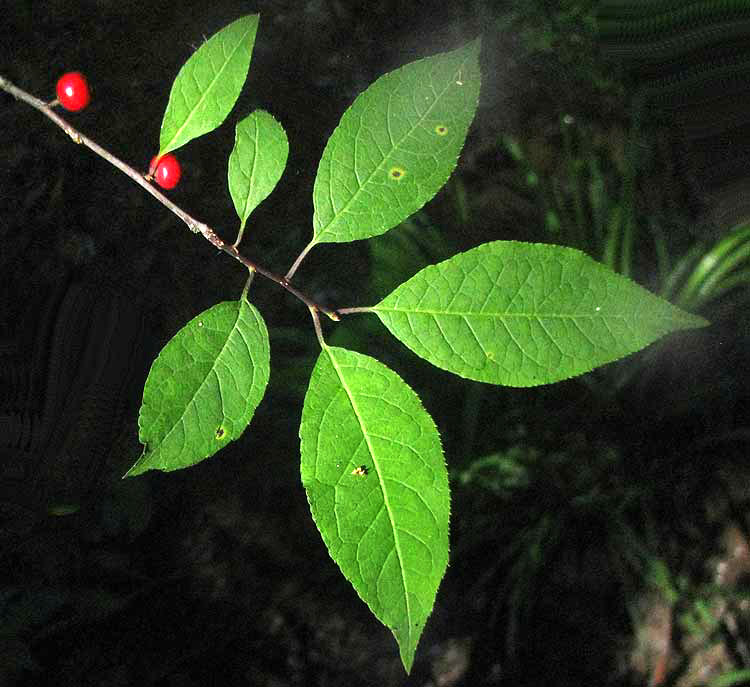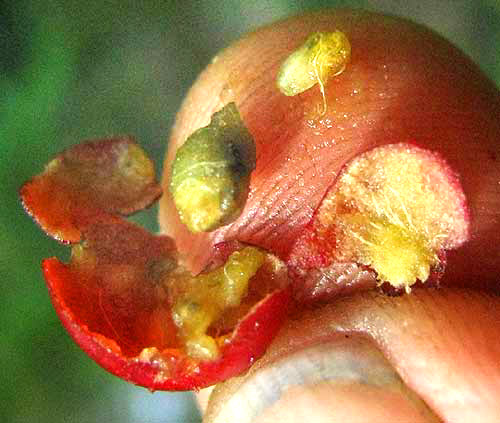Excerpts from Jim Conrad's
Naturalist Newsletter

from the June 3, 2012 Newsletter issued from the woods of the Loess Hill Region a few miles east of Natchez, Mississippi, USA
A WINTERBERRY'S LINGERING WINTER BERRIES
Deep in a swamp on a low bank right next to standing water with Baldcypress trees I was astonished to see the prettily lighted leaves and bright red fruits shown above. That's the Winterberry, ILEX VERTICILLATA, one of the deciduous hollies, and what's astonishing is that I'm used to seeing the crimson fruits during the winter, not the end of May when it's over 90° (32°C) in the swamp. The tree is called Winiterberry for reason.
I crushed a fruit to confirm the identity, shown below:

Holly fruits normally bear 2-8 bony seeds, or stones, but this fruit contained only one well formed seed and what looks like an aborted one. Maybe these fruits were somehow abnormal, didn't ripen as they should, and thus remained on the tree unnaturally long.
Whatever the case, I was glad to see such a pretty exhibition, and to learn more about this interesting species. I'm not the only one to think the species is pretty. Several cultivars have been developed retaining through the winter large numbers of red fruits. In Nature, the species is distributed throughout forested eastern North America.